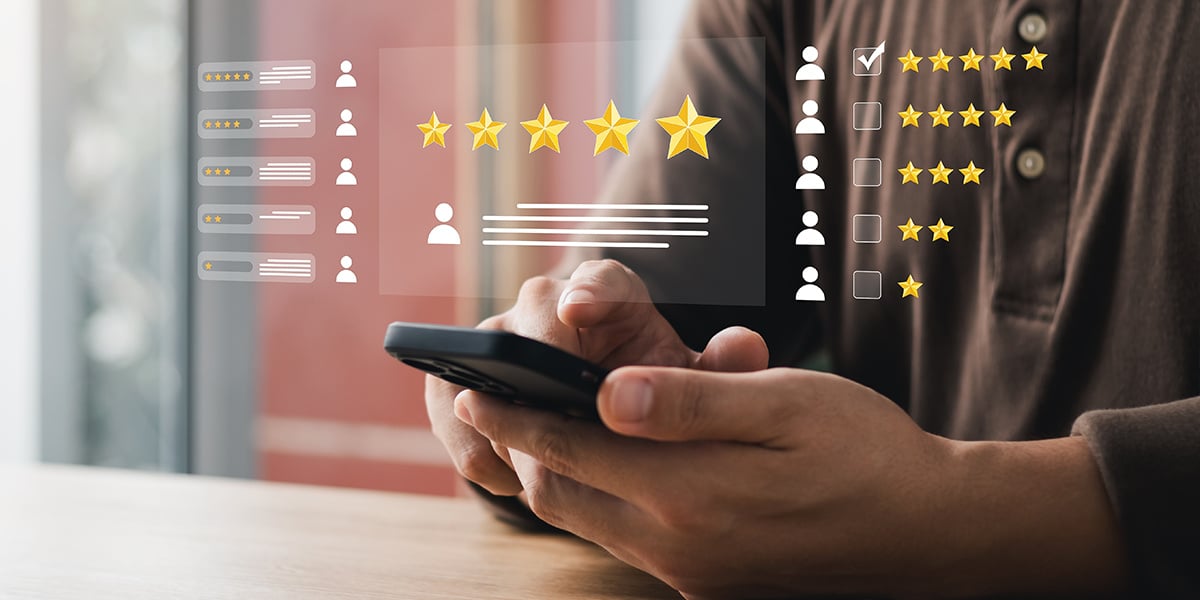In this podcast episode, Charlene Li, a successful entrepreneur, female leader, bestselling author and mother of two children, talks about the fundamental motives of disruptive innovation and how one can use this approach to their advantage in the current pandemic.
Episode 18
Episode Summary
How will COVID-19 affect corporate transformation and its focus on customer experience?
Customer experience, largely influenced by employee experience, is the leading catalyst of digital transformation. The current pandemic will almost certainly result in a higher emphasis on this area. The situation is forcing companies to go digital fast in order to provide a pleasing customer experience. Because people have been living in a digital space for a large part of their lifetime by now, the change does not have to be drastic. However, it is not perfect either. Therefore, continuous and progressive improvement is necessary.
Do innovation management processes and systems rather hinder than support innovation?
Freedom is not a precondition to innovation. It is the constraints which generate creativity. Creative processes are not underlain by the internal systems and processes but the corporate philosophy. Organisations often focus on executing operations with incremental improvements and no variations at all. Moreover, if innovation comes from outside, most likely it is to be rejected internally. Companies should acknowledge the chaotic nature of innovation process and built it in into their operations.
How can Disruptive Innovation be applied?
The disruptive mindset is constantly looking for opportunities to change in the future. As a result of that, it leads to exponential growth. The fundamental rule is to focus on the future customer as it is hard to predict what the future customer wants. It is uncertain and risky but brings your effort to fruition.
What role does Disruption Mindset play in such uncertain times?
It is no difference when disruptive leaders operate in a stable environment and when disruption is being done to them. By challenging the status quo, leaders step out of their comfort zone and create disruption by themselves. They either find the opportunities in these disruptive times or create them. On one hand, it is important to take security and safety measures. On the other, the next step is to push forward. Now, there is an opportunity for businesses to focus on contributing to the community they are part of and look for people, partners and customers who appreciate their help.
There is a high correlation between social capital and entrepreneurial success. What part could social capital play in successful disruption?
If people do things alone, they must put extra resources into places that are not their strengths. There are dangers and weaknesses in networks but also more strengths and opportunities. Disruptive mindset is a lot of exhaustive hard work.
Is disruption something for a younger generation or is that only an illusion?
There is no age difference when finding the confidence and ability to create exponential change. It is the tools that people use to help them disrupt. For example, younger generations use new technology which may seem disruptive to the older ones. However, young people do not know how to lead and create the change. Different generations respond differently but the equality of opportunity is the same for everyone.
Written by Valentina Svobodova ![]()
Full episode transcript
Louis: In this episode, we talk with one of the most creative people in business, Charlene Lee, about digital transformation and disruption as a result of the COVID-19 pandemic. We also talk about the implications and customer experience and how to drive disruption in your industry as a leader. Over the next few weeks, we are also launching a premium subscription called CX Insider with all the best energy news and content. So stay tuned to hear about how to get free access to.
Louis: Hello and welcome back to Customer Experience Conversations. Today, Greg and I are joined by Charlene Li. Charlene helps leaders and organizations see the customer of the future. She's the founder of the Altimeter Group and also author of six books, including New York Times bestseller Open Leadership. She was also named one of the most creative people in business. How are you doing today, Charlene?
Charlene: I'm doing great. Thanks for having me.
Louis: It's a pleasure. It's great to have you on the show. Now, you have a super interesting story to tell. Before we get into the main topic of this episode, I just wanted to ask you, where did your interest in digital transformation and disruption begin?
Charlene: Well, I came out of business school in 1993 and there wasn't a lot of digital going on then, but there was a little bit of internet happening with AOL and CompuServe. And I was just so intrigued by the ability to connect with people halfway around the world and be able to stay in touch with my friends. And so I thought, this was going to be really transformational. I just went, OK, I've got to get into this space. So I went to newspapers, which is a little bit counterintuitive, because I felt that newspapers would be one of the first businesses to be transformed by all this new internet work that was happening. So that's how I got into it. I basically believe that whenever there's disruption, there's opportunity. So I went to the place and the middle of Silicon Valley to the San Jose Mercury News, because I believe something was going to happen and I wanted to be in the middle of it.
Louis: Amazing. So you graduated from Harvard. And am I right in saying you founded the company Altimeter?
Charlene: Yes. And I so I did that in 2008.
Louis: Amazing.
Charlene: So a little while after that, I became an analyst in between. I was in newspapers for about five years, running groups, putting newspapers online, running a profitable venture. Actually, we were able to monetize classifieds pretty early on, experiment with online publishing for the community. Again, this is back in the late 1990s where there wasn't a lot of internet use of broadband. So we were doing things really early. It was hard. It was really painful. And then decided to go be an analyst. Did that for about 10 years at Forrester, I wrote my first book and then decided to start an analyst firm that was doing things very disruptively at the very beginning of the recession, so it was great timing in so many ways.
Louis: You pulled through it.
Charlene: Because people were looking anyways. We actually were like gangbusters because everybody's budgets got cut and they wanted to know how do we actually use this new thing called social media to engage with our customers? And there weren't a lot of people who knew anything about it. And I just written a book about it. So we have a lot of people calling us up and.
Louis: The rest is history. Yeah, so that's really super interesting for me, especially because I am currently studying business management with entrepreneurship. So to speak to someone who's built a such successful company from the ground up is is quite a privilege for me. So in regards to your research at Altimeter, one of the most recent reports I've seen is the state of digital transformation. And I want to quickly ask you about two of the main takeaways of this report. One of them is the fact that transformation efforts are continuing to focus on modernizing customer engagement and customer experience. Customer experience is a leading catalyst with culture and employee experience also growing in importance. Do you think that there will be any change to this as a result of COVID-19?
Charlene: Yes, I think the biggest change that COVID-19 is creating is there's even more of an emphasis on customer experience. And I think especially with the working from home and the sheltering in place, even more so what the employee experience is like. In so many ways, people have focused on these two things as separate. And I think what people are realizing is that they're becoming much, much more connected with each other. There's no way to separate the two. And especially the key part is the experience for many customers and for employees has become so much more digital over the past month. We were thrust and really pushed over the edge into this digital transformation because we had to, not because we wanted to. So I think even even because we have experienced now firsthand what it is like to pretty much live our entire lives in the digital space, there's greater comfort and confidence in being able to thrive in this space. And we're also realizing it is far from perfect. So there is a lot of work that we have to do within organizations to create better experiences.
Louis: Yeah, definitely. I 100% agree. I think all companies have been thrown at least five years into the future in a matter of a couple of weeks, which has been quite interesting to see. And some companies have risen to the challenge, which is great. That leads me on to my second point I wanted to ask you about from the report, and that's about corporate innovation. Corporate innovation is supposedly becoming the next digital transformation. And one of the things I've been studying is innovation management. There's a big dilemma within innovation management, and that is there's a tradeoff between efficiency gains in the form of stable routines and controlled environments. This doesn't really go with creativity gains, which require a creative, a loose and a flexible environment to develop new products and services. One possible solution could be just to simply separate the creative side of the business from the operational side. But could you possibly argue that the entire innovation management perspective or mindset that is hindering businesses at the moment?
Charlene: Yes, I think the biggest problem isn't so much whether you need freedom to be able to do creative things. Because I actually think that structure and process is a really important part of being creative and being innovative. That there was a process to do that. Because I think constraints actually create creativity. But I think the bigger problem is the mindset of the organization is, does it want to be creative? Does it want to do things really, really differently when the purpose of an organization oftentimes is to do things really well, exactly the same, and execute it with great precision, with no variations. And the improvements then inside of that environment need to be incremental because your operational focus.
Louis: Of course.
Charlene: That's not to say that innovation isn't important inside of that environment. This is a very, very different metric of success. The problem is that oftentimes people take that creative, that disruptive innovation, throw it outside of the organization because the core of the business can't tolerate that kind of variation. And I think that's a huge mistake because that, that, that group is disconnected from the realities of the business. And when they come back with something that's new, the people internally are so not used to thinking in an innovative way. They just they just reject it completely. So I think it's you point out a really interesting dilemma. And I think that the best solution is to have a tightly coupled innovation process. That thinks about thinking less about innovation being a really tight and well managed process, but acknowledging that it is messy that it is painful that it is hard to change things, but it's absolutely worth doing. So you build into your operations to be highly creative and innovative.
Louis: Yeah, I completely agree. It's almost a false premise if it's not implemented properly. It's like saying, oh, this is going to be super easy, we're going to invest and then we innovate and find the answer that's going to save the company. Now, I'm aware that you talk a lot about a different state of mind in your newest book, The Disruption Mindset. What would be your advice to firms summarizing the advice you give in that book?
Charlene: Yeah, the Disruption Mindset says, you're going to look to the future, you're going to look for opportunities for change. And that's where growth and opportunity, exponential growth and impact is going to be. And it's so hard to let go of your beautiful, profitable, existing customers today and instead focus on the customers of the future. And you do this up and down throughout the entire organization. You don't do this with just an innovation team. But every person is focused on that future customer. And it seems really counterintuitive because shouldn't you be delivering on your customers of today? Of course you do. But you really know how to do that. And you're doing that really well. And it should take very little effort on your part to serve them really well. What's really hard is to figure out where the future is going to be and then making the tough choices to invest today in this uncertain future.
Greg: And Charlene, for me, the question that I have that maybe follows on from that is, what role can the Disruption Mindset play in such strange and uncertain times? Because you typically think of what to me sometimes you typically think of innovation or having this Disruptive Mindset being something you have in a period of stability where you're really looking at, ok, how do we get better? Do you think anyone needs to change that approach with the sort of disruptive times that we see at the moment?
Charlene: Yes, I think, again, the Disruption Mindset says if you're a disruptive leader, you're constantly thinking about how to change things. And because you're upsetting the status quo, even in good times. You're actually creating your own disruption. And so it's kind of interesting. There was an innovation paradox where during the good times, your incentive to rock the boat, to change things that are going really well, are highly, highly suspect. Why do things differently? Why create pain when things are going great? And yet that's what disruptors do. And then when it's being done to you, they're like, hey, this is normal for us. We're used to all of this pain. And so they actually do consistently in the good times and the bad times the same thing. They're constantly looking for opportunities for growth constantly. And that's the hardest thing in these disruptive times. When is being done to you? I like to say that in these disruptive times when disruption is happening to you, something like Covid comes along and tears apart our status quo, the way that we imagine what a normal world looks like. It throws apart all those pieces up into the air and disruptors are going to jump when those pieces are in the air. They're going to grab all those pieces and start putting them together again to create these new opportunities. And the people who are going to become victims of disruption are ducking their heads and hoping they don't get hit. The natural instinct when things are being disrupted is to pull it, to gather the troops, to invest in safety and security. Disruptors do the same thing. They make sure everyone's here, are we safe, are we secure, because unless you do that, there's no way you can go off and do the innovative, disruptive thing. So they're really good at establishing a new normal very, very quickly, pushing forward, establishing a new normal and then pushing forward again.
Louis: I completely agree. There's this common misconception about innovation and disruption that is a singular or a linear event. But it's not, it is in fact an ongoing process that you need to manage constantly and improve.
Charlene: Right. And I'd like to say that disruptors are never satisfied with what the status quo is. They're saying, there's always got to be a better way. They see things that are going right like, this is great, things are going right. But I'm paranoid that it's not going to go right in the future. What could go wrong? Let's develop scenarios. Where are the opportunities? Have we looked at everything? And and they appreciate the moment, but also are hungry for, again, more growth, more problems to solve. And the one thing I do know about this, this time of crisis right now with COVID is that now a lot of problems solved. The problems haven't gone away. And so this is a great time for organizations to find the customers, the partners, the people who need our help, the places where we can really serve. And the sooner you can get out there, the benefit goes again back to the organizations but also to our communities and to society.
Louis: Amazing. Yeah. And I just want to move on quickly because we're running out of time, unfortunately. So throughout my study of entrepreneurship, one of my key findings I discovered relating to start-ups, small businesses and even corporations, is the most important types of capital. One study I reviewed identified the correlation three different types of capital had on entrepreneurial success. So that was human capital, so an individual skills. Financial capital, obviously the money. And social capital. Surprisingly, the one that had the highest correlation with entrepreneurial success was the amount of social capital the individual has. That is the networks and the people that the entrepreneur has got access to and that they can leverage. This isn't just relevant to small businesses, of course. I think we're seeing the same trend at the moment with corporations and innovation. The "go it alone" innovation strategy is ki nd of dying. And what's coming up now instead of this is the Octopus strategy. This can be seen with IBM, who partners with Microsoft for their software, Toshiba for their screens, Cisco for their security systems. So clearly this open or network model of innovation and disruption has some pull behind it. How do you think networks are a fundamental part of successful disruption?
Charlene: I'm a big believer in networks because if you have to do it alone, you have to put so many more resources into places where they're not your strength. Versus being able to focus on the one thing that you do really, really well and then work with all your other partners to fill in those gaps and you can leverage their strengths. And again, I think what you're finding right now with Covid, we have this hashtag together. We realize that if we are going to make it work in this new world, we're going to have to work together because we'll never get there doing it by ourselves. We're seeing, in a very vivid way, just how interconnected we are. While there are dangers and weaknesses to networks, I think there are so many more strengths and opportunities that come from that. I'm a big believer in this. I've started a new group called Quantum Networks that is really trying to connect these disruptive leaders. One of the things I found in writing the book and talking to all these leaders is that I was asking them, how do you rejuvenate? How do you find the strength to carry on? Because disruption is really hard work. It's soul crushing. This we don't have anywhere. I'm oftentimes the only person in my organization who thinks this way, I'm exhausted. So I wanted to create a network where people could get together and support each other. Because to your point, the social networks that we have are in many ways the places that we not only get support but also places where we get examples and ideas and validation, so that we can go on and do the tough work ahead of us.
Louis: Yeah, I can imagine that being super helpful for a lot of the lone disruptors and innovators that are out there.
Greg: You know, one thing I was going to ask Charlene is whereabouts can people find the Quantum Networks information? So is that on a website, you see on social media?
Charlene: Yes, we're on social media. We have a website. It's probably the easiest way to do that. It's called quantum-networks.com. Free to join. We have a nice conversation online. And we also have events and small groups that get together on a periodic basis to to really get into the issues that are facing members.
Louis: Ok, and how is the Quantum Network different to your standard business network?
Charlene: I think it's very similar. Again, it's very much based on my experience with a group called YPO, which used to be called Young Presidents Organization. I joined YPO back in 2011 and it's a network of almost 29 000 CEOs around the world. Literally, you can call any member of YPO and reach out to them. Our promise to each other is to get back to you within 24 hours. We try to be really responsive. But more importantly, there are these small groups called forums. My forum has eight people in it and they are my personal advisory board. I have learned so much from them because they sit in the same shoes that I do. That experience was so transformative to me. I'm like, how do I bring this to more people and especially people who are trying to do really audacious things? So I do believe that these peer based groups are extremely informative. Some business networks will do that, some don't. Business networks, again, around a particular industry or role are incredibly powerful, but disruption is a mindset. So be able to find people who think this way, act this way, have ambitions in a similar way are really hard to find. This is a network that functions like many other networks, but it's based on a mindset, not an industry orr will the department or title.
Greg: So one final question I have then Charlene is if someone was to say I want to be more disruptive in my role within my organization, other than, of course, utilizing amazing networks like Quantum Networks, where can they start? What can they do on a daily basis to start to drive more disruption, innovative thinking within the business that they're in? Where do you think it's best for people sometimes just to start?
Charlene: Yes, that's a great question. I believe that being disruptive means being a leader. A leader is somebody who creates change. It's not a title. I love this quote from a California senator, Kamala Harris. She goes, never asked permission to leave, just leave. So I would say, go find something to disrupt and don't just blow it up. Disruptors are creating exponential change and growth. Look around you. There are so many problems to solve, especially today. Again, how can you start harnessing people around this? I was just writing about a doctor, an emergency room doctor in Rhode Island, who put out a tweet like, I can't believe I have to turn to social media to get protective personal protective equipment. And she wrote #getmePPE. It started trending. And another emergency room doctor put up a website saying, if you have any extra mass, put it up here and we'll try to get it to a hospital. A few days later, 100 hundred software developers showed up to actually make it a functioning website. Today they have a thousand hospitals there and they're sourcing PPE from all around the world, volunteers making it and getting into the hands of these health care workers. It took one person to put out a tweet, another person to add on to that, and that's how they started disrupting the supply chain for PPE.
Louis: Yeah. One of the companies just down the street from our office, actually Greg, is utilizing two of the spare 3D printers they have. Now, they don't operate in health care at all. But one of the amazing things that they're doing is donating these 3D printers to create PPE. But it's just amazing to see all these companies come together and make change.
Charlene: And so I think about, people are asking me, so where are the opportunities going to be if disruption creates opportunities for change and growth? Where are these opportunities? Go hang out with a parent who is working from home with school age kids for an afternoon. Just explore their life okay. Go work with one of these essential workers, travel with them and see all the hurdles they have to through in order to serve. These are pressing problems. And again, I'm so encouraged by the fact of these grassroots movements of people just jumping in with both feet and saying, I'm going to serve, I'm going to solve these problems. That's what disruption does. It says, I'm not going to stand by and see these things happen, see this turmoils, see my community being torn apart. I'm going to do something about it. I'm going to go disrupt disruption and make a change that's going to be for the better.
Greg: And I guess it may be worth highlight one final question is that with disruption and innovation, especially in disruptive times like this, is it maybe a bit of an illusion that disruption is something of a younger generation, but of course, it can be done by anyone. Right. It doesn't really, you know, disruptive and innovation doesn't have a preference whether you're you're younger or not. Is there like an illusion there at all that you've ever come across that people think that -.
Charlene: It's a complete illusion. Yeah, I think I surveyed a thousand leaders from all around the world on their ability to disrupt. And I define that as you are confident in your ability to create exponential change and found no difference. There was no age difference. The numbers were absolutely steady by generation, by decade. And so, you know, 6-year-olds saw themselves just as disruptively as 20-year-olds. What the difference is, is that younger generations tend to use more of these new technologies that appear and feel very disruptive to older generations, which just aren't used to it. How many times I've had to explain TikTok to my my fellow Gen Xers over the past week. What is TikTok? I don't get it. I like this note, it's not a social network. And they are just like, what do you do with this? And they just don't understand it. So I get it. It's, it's new. It's different. People communicate in different ways, but that's always been the case. When is that never been the case. With these younger generations, they don't necessarily know how to lead. They don't know how to create change. They don't know how to jump into things. So they may be very connected, but they connect in different terms. And it's been fascinating to see how uncomfortable they are using Zoom in the classroom. They hate it. They feel trapped. Like, what do you mean I have to be on video the entire time? This is not part of the social contract in the way that they ever seen technology. Whereas, older generations were having happy hours, were having a great time because they've never been able to do this kind of work before. And they're like, yeah, we do happy hours with each other all the time, but it's just through different way and media. So it's fascinating to see how different generations based on how they use technology, how they develop relationships on these different channels, are responding to this. Again, very, very big shift into the new space.
Louis: Amazing.
Greg: Love it.
Louis: So that's probably a good point to wrap up on. Thank you so much for joining us, Charlene. It's been amazing having you. If you'd like to check out any of Charlene's books, especially the most recent one. On Amazon, it's the Disruption Mindset. If you'd like to check out Charlene's website, it's CharleneLi.com. And thank you very much for joining us again.
Charlene: Thank you so much for having me. Really appreciate it.








